CHARLOTTE — There's clearly a weight that comes with picking a quarterback first overall.
Most teams don't have the chance to do so without enduring hardship — that's how you typically end up with that choice. But the pick that can change the course of a franchise is also an opportunity, and the teams that have done it most recently have enjoyed the bounce they get from a Trevor Lawrence, a Joe Burrow, or a Kyler Murray.
But there are conditions that come with it if you want that guy to actually succeed.
The paths blazed by recent teams to do what the Panthers are about to do give some clear indicators of what you should and shouldn't try in that situation. While every situation is different, there are ways to give yourself a much better chance of making the investment in a quarterback worth it.
For the teams who are enjoying the good side of it now, there are also intangibles that you have to factor in as well. It's a precious resource, a quarterback picked first overall.
So you have to take care of him in more ways than one.
"Number one, if he's your guy and he's your starter, and he's the face of your franchise, you've got to show him confidence," said Jaguars coach Doug Pederson, who inherited Lawrence in his second year in the league, after the former Clemson quarterback endured the ill-conceived and poorly executed Urban Meyer experiment. "You've got to show him; we're behind you, we're not here to get the next guy ready, looking over your shoulder. But have the confidence from the organization, from the coaching staff, thick or thin, you're going to be our guy, and we're going to work through some tough times, and we're going to have success.
"That's the biggest thing, is just having that confidence from the coaching staff for a young player, especially a quarterback, to know, 'Hey, we've got your back, no matter what happens.'"

Of course, the Jaguars did much more than believe in Lawrence or pat him on the back. They put the pieces in front of him to help make him feel confident.
In addition to bringing in a Super Bowl-winning coach such as Pederson, they also spent heavily in free agency to give the quarterback a better chance at success. The Jaguars went out and signed free agent receivers Christian Kirk and Zay Jones (who combined for 166 catches and 1,931 yards) last year, along with tight end Evan Engram (73 catches), and big-ticket guard Brandon Scherff to solidify the offensive line.
The result was an incredible rise from the 3-14 record the previous year, as the Jaguars went 9-8 to win their division, making their first playoff appearance since 2017.
Of course, having a quarterback as talented as Lawrence was one of the big reasons, but the way they supported him was clear. With an improved cast and improved coaching, he looked more like the quarterback who led the Tigers to a national title than the one who stumbled through a rough rookie season.
His completion percentage went way up (59.6 percent in 2021 to 66.3 in 2022), and so did the touchdowns (12 to 25), and the interceptions went way down (17 to 8).
While free agent splashes aren't always sustainable, and not every team chooses to go that route, insulating that investment has to be a priority if you're going to draft a quarterback with such a high pick.

For the Bengals — never among the league's free spenders — they followed the selection of Burrow with the first pick in 2020 by taking receiver Tee Higgins at the top of the second round. After the Bengals went 4-11-1 in Burrow's rookie year, they picked fifth overall in the 2021 draft and had a philosophical choice to make. Even though a top tackle prospect (Penei Sewell) was sitting there, they went with LSU wide receiver Ja'Marr Chase instead.
Chase and Higgins responded with more than 2,500 receiving yards between them the following year, and even though Burrow absorbed 51 sacks in the regular season, they still made it to the Super Bowl in his second season.
But for Bengals coach Zac Taylor, everything started with being absolutely convinced that Burrow was that guy.
Prior to the 2020 draft, he and offensive coordinator Brian Callahan watched Burrow's entire final season at LSU and grew more and more certain with every game they watched.
"Brian and I watched those games in January, all 15 of them or whatever it was," Taylor recalled. "I think when you turn off the tape after 15 games, it's like this is a no-brainer. You see the creativity, the extendability, the accuracy, the poise, and the ball security. It just all shows up on tape. That's why he had one of the most spectacular seasons in college football history, he went to the national championship, and that's why he's been able to do so many great things."
Taylor said after Burrow arrived, the priority was on making sure he felt the same kind of comfort Pederson talked about but said much of that was a function of play-calling and communicating the theory of the offense in advance.
"For us, we try to make him as comfortable as possible," Taylor said. "Find his top concepts he was successful at in college, make sure they were part of what we were doing. Just so when we're putting the playbook together, if there were moments — and there weren't with Joe — but if there were moments where he needed to get comfortable, we could pivot to, 'Hey, let's get him back on track here with the things he's good with.' That was the thought.
"But Joe didn't really need that. He jumped in on day one with what we wanted to do and seemed very comfortable with all of it. But that was our mentality, to be aware of what got him to this point, and if that's a benefit to him and we can turn to it at some point, we've got it."

The Bengals won their division again last year, going 12-4, before losing to Patrick Mahomes and the Chiefs in the AFC Championship Game. And with Burrow heading into his fourth season, they're also closing in on the time when rookie quarterbacks stop being cheap.
For instance, Burrow's rookie deal will pay him $36 million over his first four seasons. Mahomes is making an average of $45 million per year, and since top-end contracts are subject to the same kind of year-to-year inflation as every other consumer good, the Bengals know they're going to be paying Burrow in a big way, and soon.
Taylor acknowledged that cuts into some of their margin, making it hard to spend in other areas, but he's so convinced in Burrow's ability that he's not fearful of a market-value contract compromising their ability to compete. He's seen Tom Brady win enough Super Bowls and seen the Chiefs continue to win after paying Mahomes that the path seems obvious to him.
"It's certainly an advantage from a cap standpoint (having a QB on a rookie deal), but a lot of Super Bowls have been won by guys on their second, third, fourth deals," Taylor said. "I feel very comfortable that we're going to be able to compete at a high level, even with Joe off that initial contract.
"It makes sense that you're going to be able to get more players under that deal, but the other side of the coin is the quarterback now is more experienced with every year that passes, and you essentially have a coach on the field who has seen everything there is to be seen. So that experience factors in and is a good thing to have when they're on that second contract."
Of course, doing so demands that you have to hit on a higher percentage of draft picks to balance the books, but drafting well is generally a prerequisite to success anyway.
And when you don't nail those high picks, things get complicated in a number of areas.

For the Cardinals, drafting Murray first overall in 2019 might have seemed like a no-brainer.
But they were just a year removed from drafting quarterback Josh Rosen 10th overall, which complicated matters. Murray's link with new coach Kliff Kingsbury made it seem like a natural fit, but there was still a process of evaluation before the Cardinals became convinced to roll the dice on the 5-foot-10 Murray.
They did bring in a solid mid-priced guard in free agency in J.R. Sweezy, but most of their free agent allocations were on the other side of the ball that offseason.
Murray clearly provided a bounce his rookie year, throwing for 3,722 yards and 20 touchdowns and rushing for 544 yards and four scores. He won offensive rookie of the year honors, but the team finished 5-10-1, as they clearly struggled to find the right balance.
Panthers vice president of player personnel Adrian Wilson was working in pro scouting for the Cardinals during those years, and he admitted it took some time to get the roster right.
"When you go through the process and have a quarterback sitting there number one, you have to look at your offensive line; you have to look at your weapons around him. Are you putting him in a situation where he can come in and succeed early?" Wilson said. "That was our biggest thing whenever we drafted Kyler. Obviously, we got a head coach he knows, he's got a system he knows and he's comfortable with. But then just put a team around him where he can be successful in year one. That was the big thing.
"You can get caught in the weeds a little bit, of forgetting the other side of the ball, for one. And not forgetting about special teams. You don't want to get your roster so top-heavy that you're messing up the bottom half of the roster and not developing the depth you need throughout the year. And injuries happen. You just try to make sure you have everything in place. War of attrition is a real thing. We just tried to make sure we were still plugging holes and that we went into the following year with a plan based on what we came from."
Like the Jaguars did last offseason, the Cardinals were aggressive heading into Murray's second year. They extended tackle D.J. Humphries, used the transition tag to keep breakout running back Kenyan Drake, and traded for star wideout DeAndre Hopkins, giving them a top target to pair with veteran Larry Fitzgerald and the ascending young Kirk (who cashed with the Jaguars last offseason).
They showed real progress, improving to 8-8 in 2020, and continued to stack assets, signing veteran AJ Green to replace Fitzgerald, bringing in running back James Conner, and drafting wideout Rondale Moore to keep the pipeline of targets stocked, and then traded for tight end Zach Ertz during the season. They'd go 11-6 and make the playoffs for the first time since 2015.
"Depth was a huge thing offensively, with the line or the backs or receivers," Wilson said. "We were really trying to build it around Kyler and his skill set.
"We felt like even if we got an average player, he could make him a better player than what that guy's skill set might be."
The Cardinals regressed last year, and Murray suffered a knee injury, clouding the future there. But the gradual addition of weapons to maximize the investment in the quarterback was a roadmap the Bengals and Jaguars followed.

The Panthers clearly took notes. After making the trade for the top pick in this year's draft, they were busy in free agency, retaining center Bradley Bozeman to keep the offensive line together and signing running back Miles Sanders, receivers Adam Thielen and DJ Chark, and tight end Hayden Hurst.
Now, all they have to do is get the quarterback decision right and hope it turns out as well as some of the recent picks have.
It doesn't always work out. The year before the Cardinals took Murray, the Browns drafted Baker Mayfield first overall. He had some success, but became the Panthers' latest rental a year ago, didn't last the season, and had a pit stop with the Rams before signing with the Buccaneers this offseason.
The Panthers clearly went all-in to change directions this offseason, to stop the flow of veterans-of-the-year, and change course with a rookie.
Pederson for one likes Panthers head coach Frank Reich's chances. He was Reich's boss in Philadelphia when they traded up to take Carson Wentz in 2016 and saw Wentz play his best football before an injury during their Super Bowl run. Things haven't gone as well for Wentz since, but Pederson said Reich's experience and temperament make him a perfect tutor for a young quarterback, along with the staff Reich built.
So when he sees Reich and most of the offensive staff and front office and ownership out on the road for pro days, he sees them doing the legwork for the most important decision they'll make.
"The draft, you've got to be right," Pederson said. "With every decision you make in the draft, that collaborations, the pro days, the private workouts, whatever you decide to do to be able to figure these guys out.
"They're going to be your franchise guy. They're going to be the face of your organization. Again, you want to be right in that decision."
The importance of this call can't be overstated.
But when you do those evaluations, when you spend as much time as these teams spend preparing for such a consequential call, you tend to come away with a certain conviction.
The Bengals clearly got it right when they did this three years ago. That's why Taylor can smile when he's asked about it now.
"Did I feel pressure? No, it was more relief that we got our guy," the Bengals coach said. "And I can tell you with absolute certainty that we felt like we weren't missing with this guy."
Here's a look at some of the top quarterbacks in this year's class, including Bryce Young, CJ Stroud, Anthony Richardson, and Will Levis.

Ohio State quarterback C.J. Stroud plays against Oregon during an NCAA college football game Saturday, Sept. 11, 2021, in Columbus, Ohio. (AP Photo/Jay LaPrete)
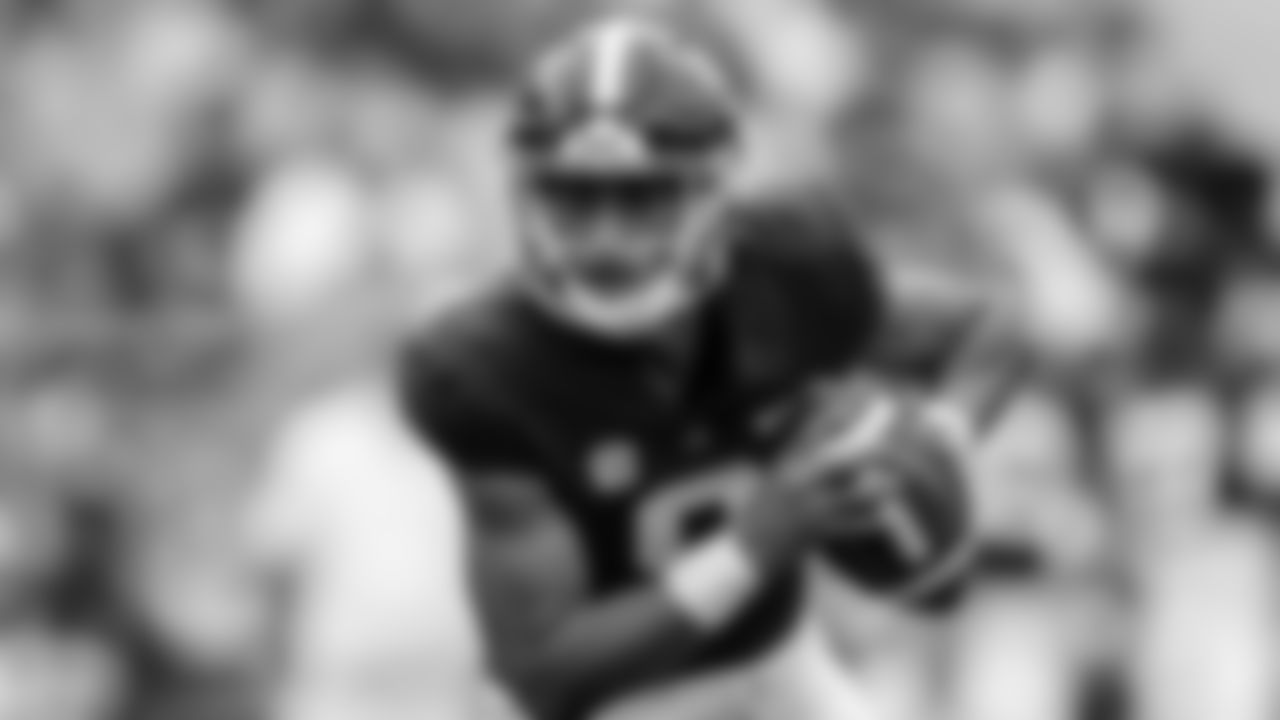
Alabama quarterback Bryce Young (9) during the first half of an NCAA college football game, Saturday, Oct. 2, 2021, in Tuscaloosa, Ala. (AP Photo/Vasha Hunt)

Kentucky quarterback Will Levis rushes during an NCAA football game against Miami Ohio on Saturday, Sept. 3, 2022, in Lexington, Ky. (AP Photo/John Amis)

Florida quarterback Anthony Richardson (15) runs through the end zone after rushing for a 45-yard touchdown during the first half of an NCAA college football game against Utah, Saturday, Sept. 3, 2022, in Gainesville, Fla. (AP Photo/Phelan M. Ebenhack)

Ohio State quarterback C.J. Stroud looks for an open receiver during the first half of an NCAA college football game against Maryland, Saturday, Oct. 9, 2021, in Columbus, Ohio. Ohio State beat Maryland 66-17. (AP Photo/Jay LaPrete)
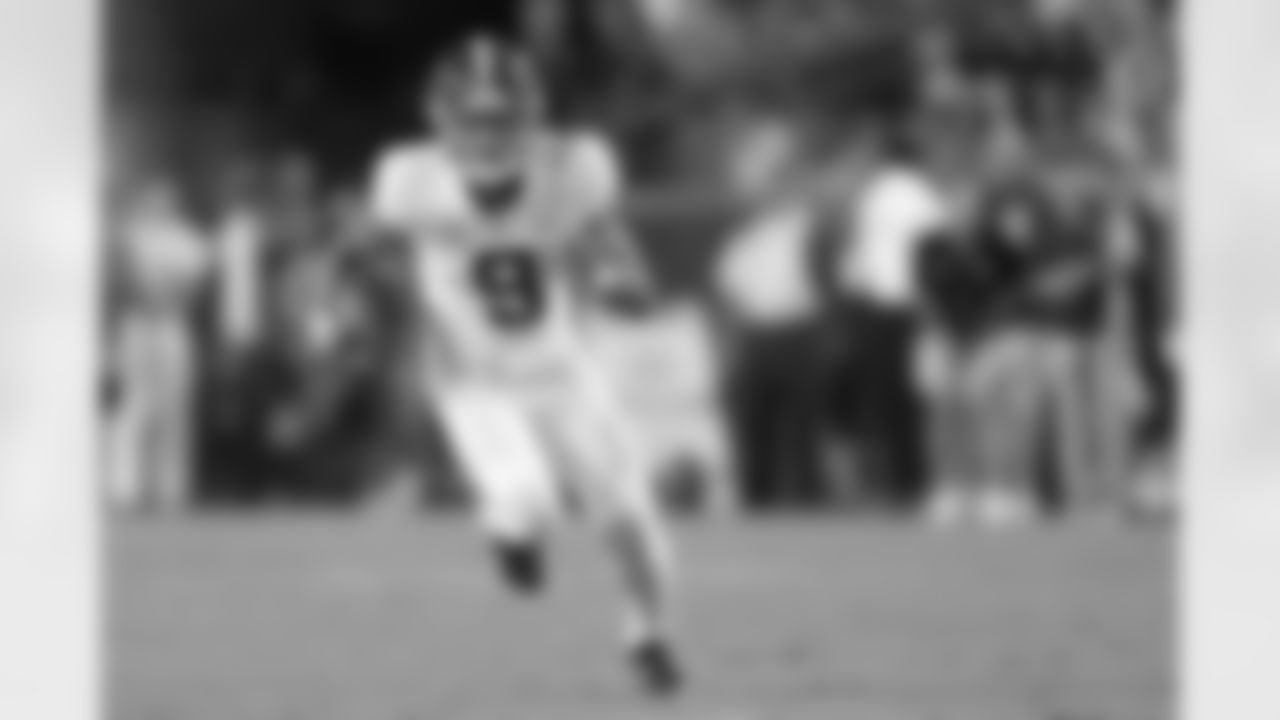
Alabama quarterback Bryce Young (9) runs for a pickup of 9 yards against Texas A&M during the first quarter of an NCAA college football game on Saturday, Oct. 9, 2021, in College Station, Texas. (AP Photo/Sam Craft)
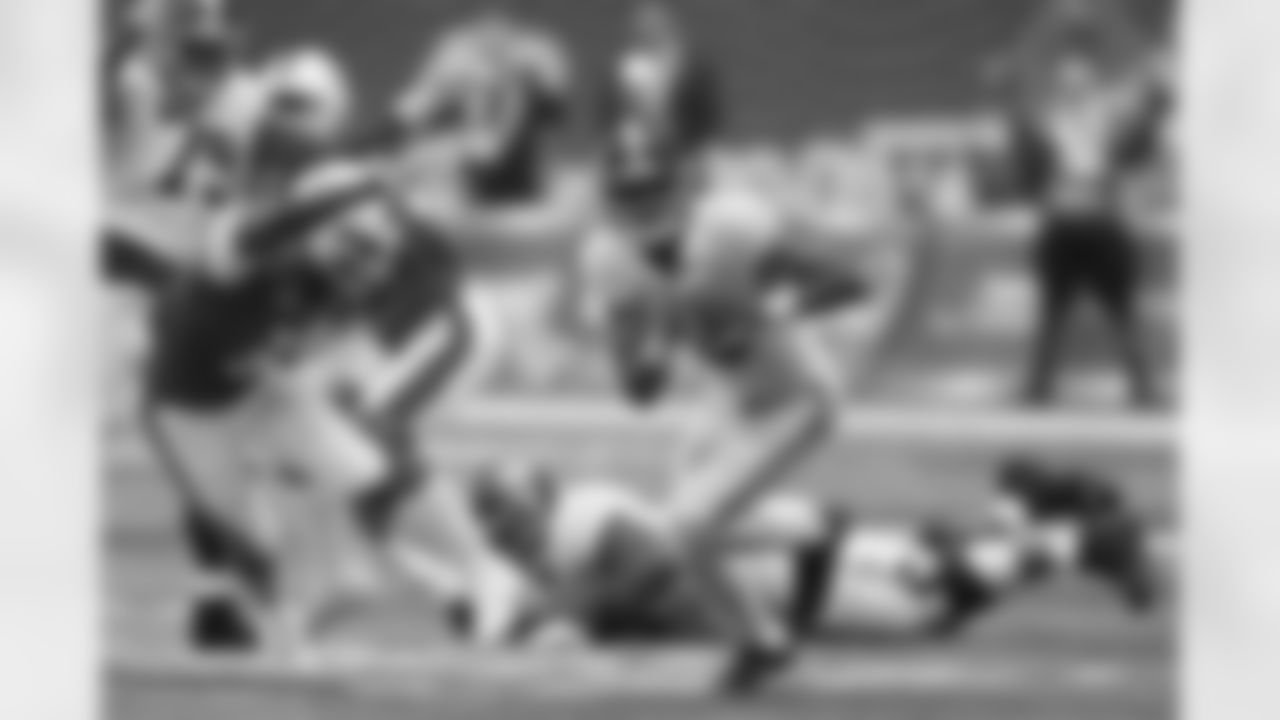
FILE - Alabama quarterback Bryce Young (9) scrambles away from Miami safety Gilbert Frierson (3) before throwing a touchdown pass during the first half of an NCAA college football game in Atlanta, in this Saturday, Sept. 4, 2021, file photo. Young was selected to The Associated Press Midseason All-America team, announced Tuesday, Oct. 19, 2021. (AP Photo/John Bazemore, File)

Ohio State quarterback C.J. Stroud (7) looks to pass while playing Indiana during the first quarter of an NCAA college football game in Bloomington, Ind., Saturday, Oct. 23, 2021. (AP Photo/AJ Mast)
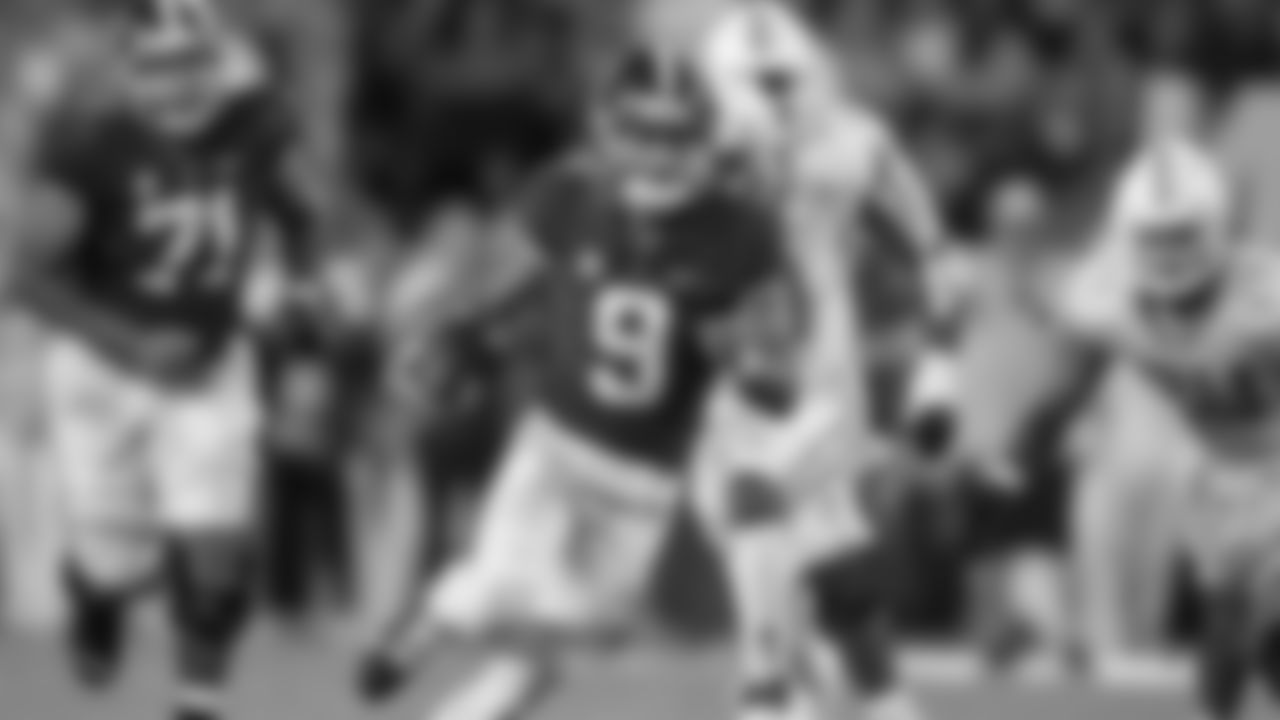
Alabama quarterback Bryce Young (9) runs the ball during the second half of an NCAA college football game against Tennessee, Saturday, Oct. 23, 2021, in Tuscaloosa, Ala. (AP Photo/Vasha Hunt)

Kentucky quarterback Will Levis (7) runs the ball upfield during an NCAA college football game against New Mexico State in Lexington, Ky., Saturday, Nov. 20, 2021. (AP Photo/Michael Clubb)

Alabama quarterback Bryce Young (9) throws during the second half of an NCAA college football game against Auburn, Saturday, Nov. 27, 2021, in Auburn, Ala. (AP Photo/Vasha Hunt)
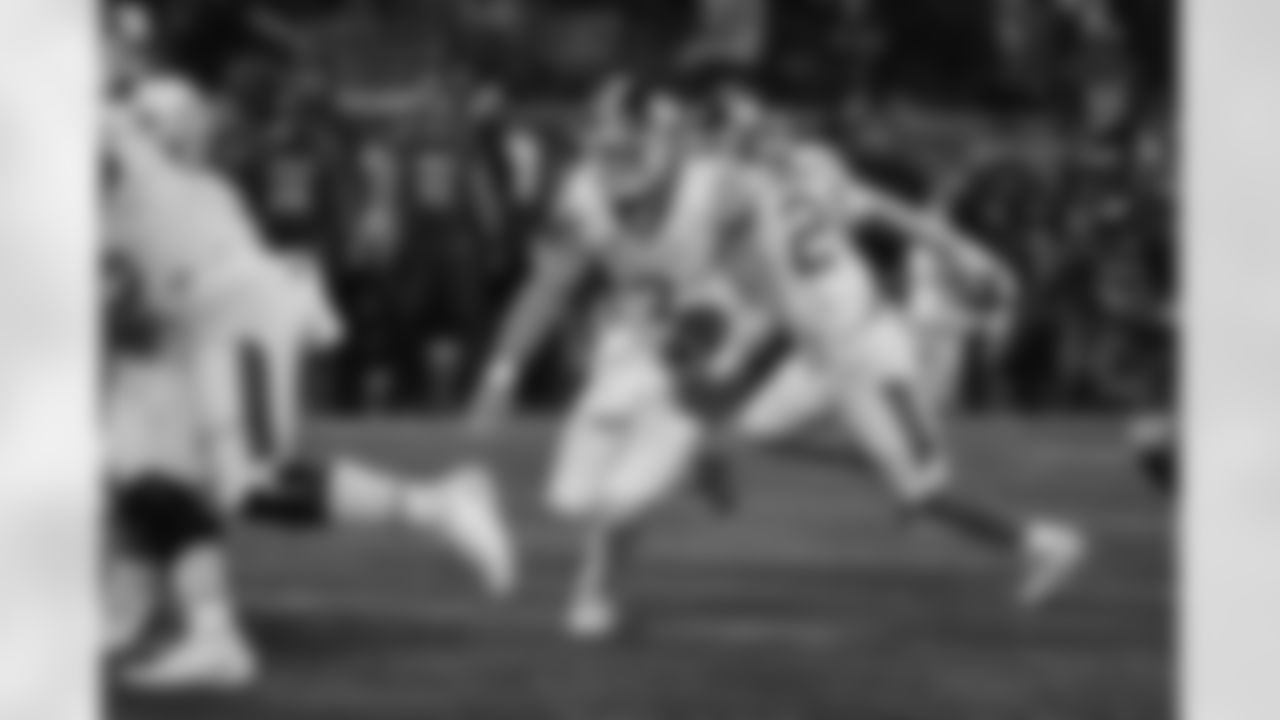
Kentucky quarterback Will Levis (7) runs through an opening in the Louisville offense during the first half of an NCAA college football game in Louisville, Ky., Saturday, Nov. 27, 2021. (AP Photo/Timothy D. Easley)
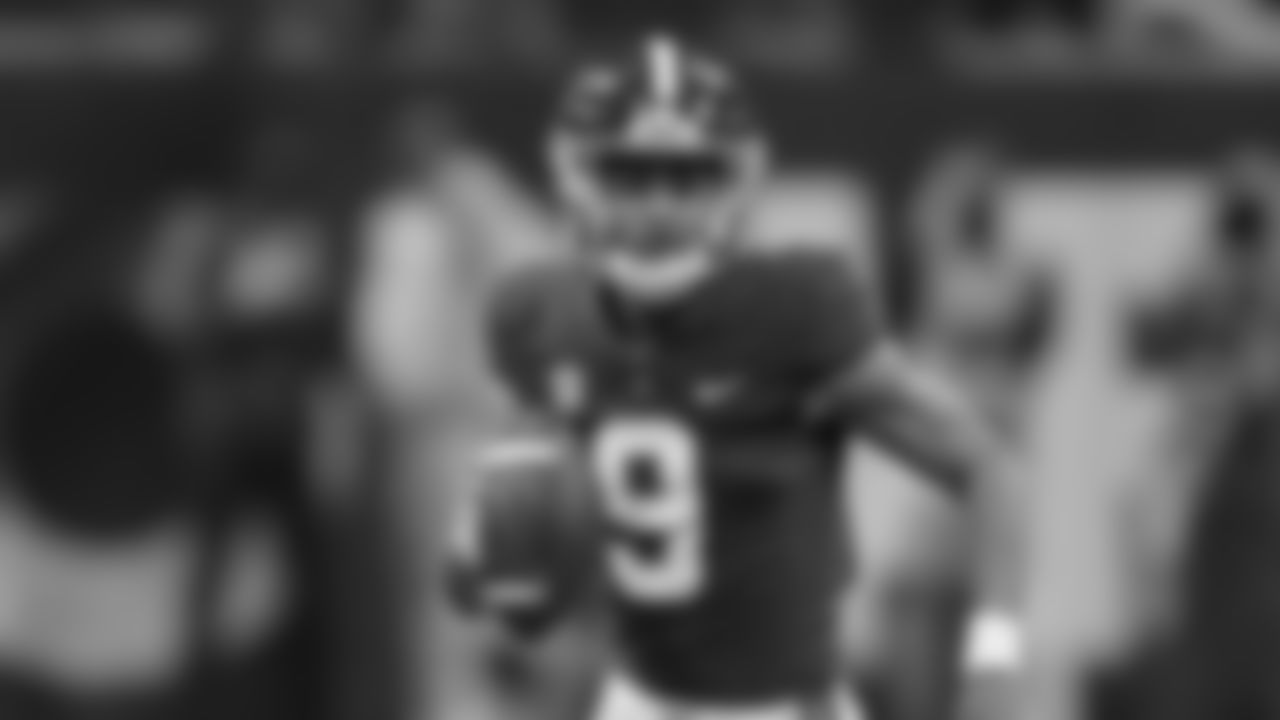
Alabama quarterback Bryce Young (9) runs against Georgia during the first half of the Southeastern Conference championship NCAA college football game, Saturday, Dec. 4, 2021, in Atlanta. (AP Photo/Brynn Anderson)

FILE - Alabama quarterback Bryce Young (9) works against Georgia during the second half of the Southeastern Conference championship NCAA college football game Dec. 4, 2021, in Atlanta. Young, Michigan defensive end Aidan Hutchinson, Pittsburgh quarterback Kenny Pickett and Ohio State quarterback C.J. Stroud are the finalists for the Heisman Trophy. (AP Photo/John Bazemore, File)

Alabama quarterback Bryce Young holds the Heisman Trophy at an award ceremony, Saturday, Dec. 11, 2021, in New York. (Todd Van Emst/Heisman Trust via AP, Pool)

Kentucky quarterback Will Levis (7) scrambles for yardage in front of Iowa defensive lineman Zach VanValkenburg (97) during the second half of the Citrus Bowl NCAA college football game, Saturday, Jan. 1, 2022, in Orlando, Fla. (AP Photo/Phelan M. Ebenhack)

Florida quarterback Anthony Richardson (15) rushes for a 45-yard touchdown during the first half of an NCAA college football game against Utah, Saturday, Sept. 3, 2022, in Gainesville, Fla. (AP Photo/Phelan M. Ebenhack)
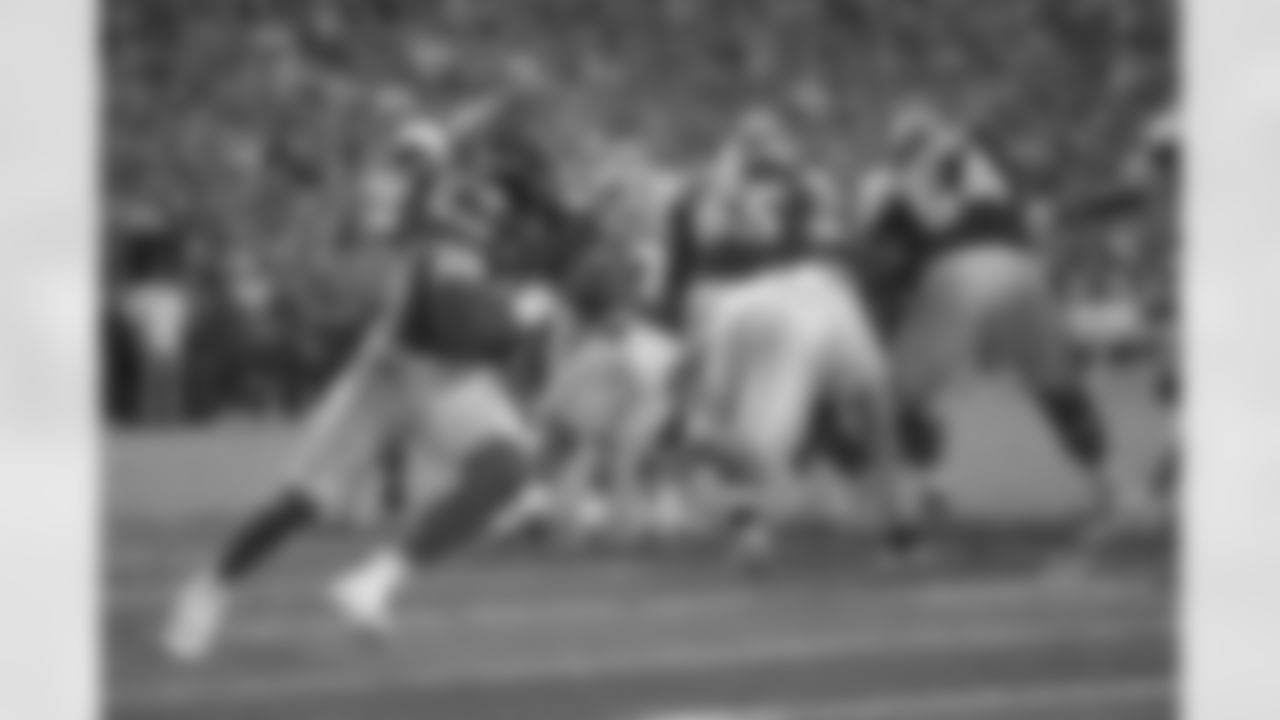
Florida quarterback Anthony Richardson (15) rolls out to throw a pass from the end zone during the second half of an NCAA college football game against Utah, Saturday, Sept. 3, 2022, in Gainesville, Fla. (AP Photo/Phelan M. Ebenhack)

Kentucky quarterback Will Levis (7) looks for an open receiver during an NCAA college football game against Miami (Ohio) in Lexington, Ky., Saturday, Sept. 3, 2022. (AP Photo/Michael Clubb)
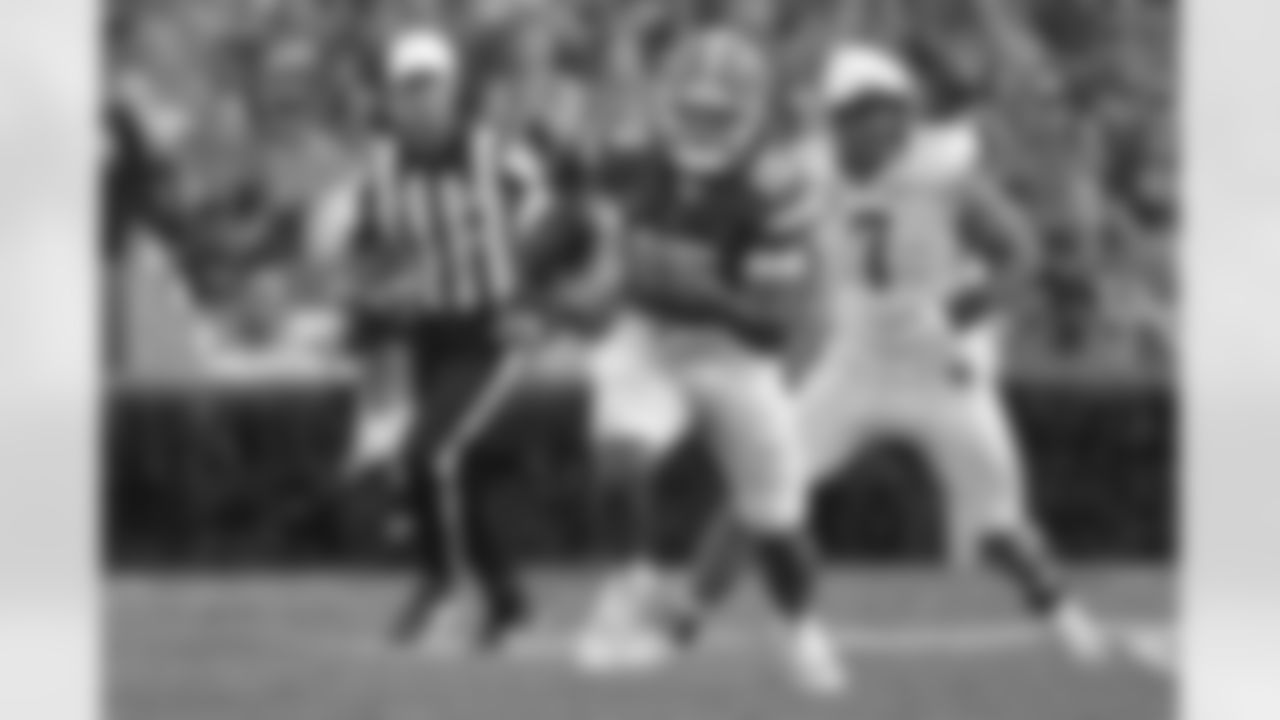
Florida quarterback Anthony Richardson (15) scrambles for yardage in front of Utah defensive end Van Fillinger (7) during the first half of an NCAA college football game, Saturday, Sept. 3, 2022, in Gainesville, Fla. (AP Photo/Phelan M. Ebenhack)

Florida quarterback Anthony Richardson, right front, throws a pass during the first half of an NCAA college football game against Kentucky, Saturday, Sept. 10, 2022, in Gainesville, Fla. (AP Photo/John Raoux)

Ohio State Buckeyes quarterback C.J. Stroud (7) during a NCAA college football game against the Arkansas State Red Wolves on Saturday, Sept. 10, 2022 in Columbus, Ohio. (AP Photo/Emilee Chinn)

Youngstown State linebacker Alex Howard (3) chases down Kentucky quarterback Will Levis (7) during the second half of an NCAA college football game in Lexington, Ky., Saturday, Sept. 17, 2022. (AP Photo/Michael Clubb)

Ohio State quarterback C.J. Stroud looks to throw a pass against Wisconsin during the first half of an NCAA college football game Saturday, Sept. 24, 2022, in Columbus, Ohio. (AP Photo/Jay LaPrete)
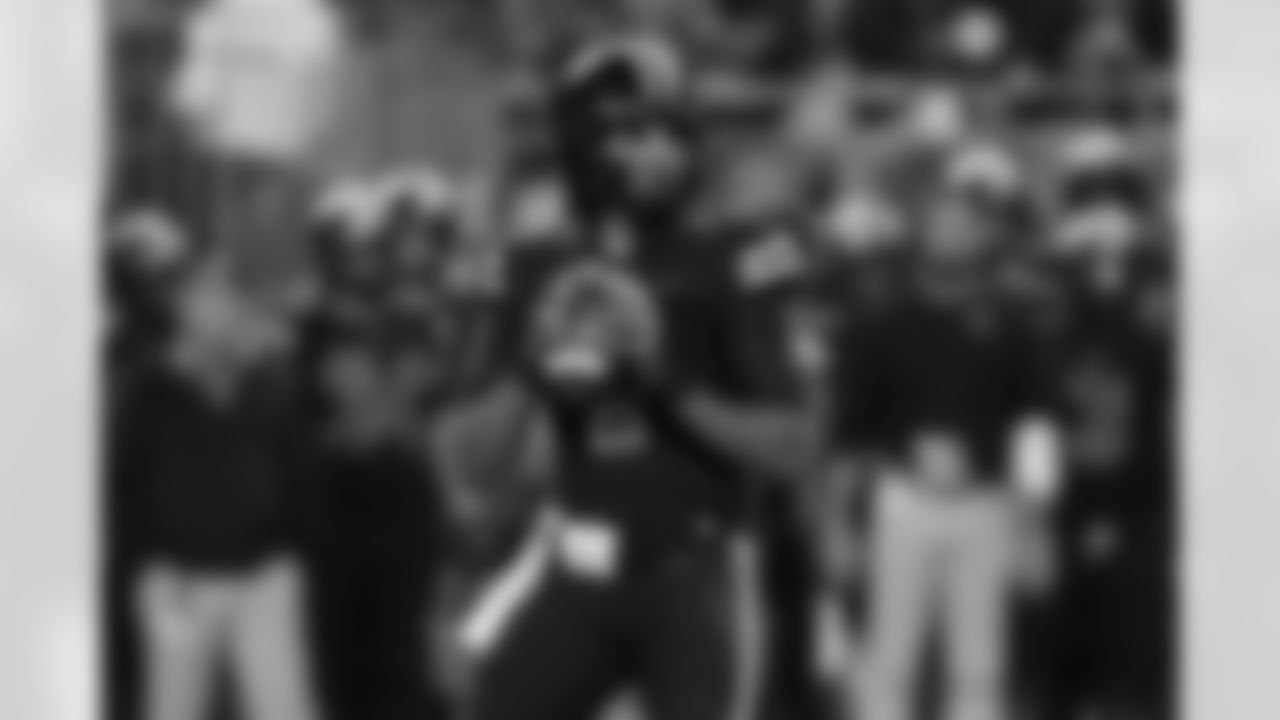
Ohio State quarterback C.J. Stroud plays against Wisconsin during an NCAA college football game Saturday, Sept. 24, 2022, in Columbus, Ohio. (AP Photo/Jay LaPrete)

FILE - Ohio State quarterback C.J. Stroud plays against Rutgers during an NCAA college football game Saturday, Oct. 1, 2022, in Columbus, Ohio. Stroud was selected top offensive player in the Associated Press Big Ten Midseason Awards, Tuesday, Oct. 11, 2022. (AP Photo/Jay LaPrete, File)

Florida quarterback Anthony Richardson looks for a receiver during the first half of an NCAA college football game against LSU, Saturday, Oct. 15, 2022, in Gainesville, Fla. (AP Photo/John Raoux)

Florida quarterback Anthony Richardson scrambles for yardage against LSU during the first half of an NCAA college football game, Saturday, Oct. 15, 2022, in Gainesville, Fla. (AP Photo/John Raoux)

Ohio State quarterback C.J. Stroud throws a touchdown pass against Iowa during the second half of an NCAA college football game Saturday, Oct. 22, 2022, in Columbus, Ohio. (AP Photo/Jay LaPrete)
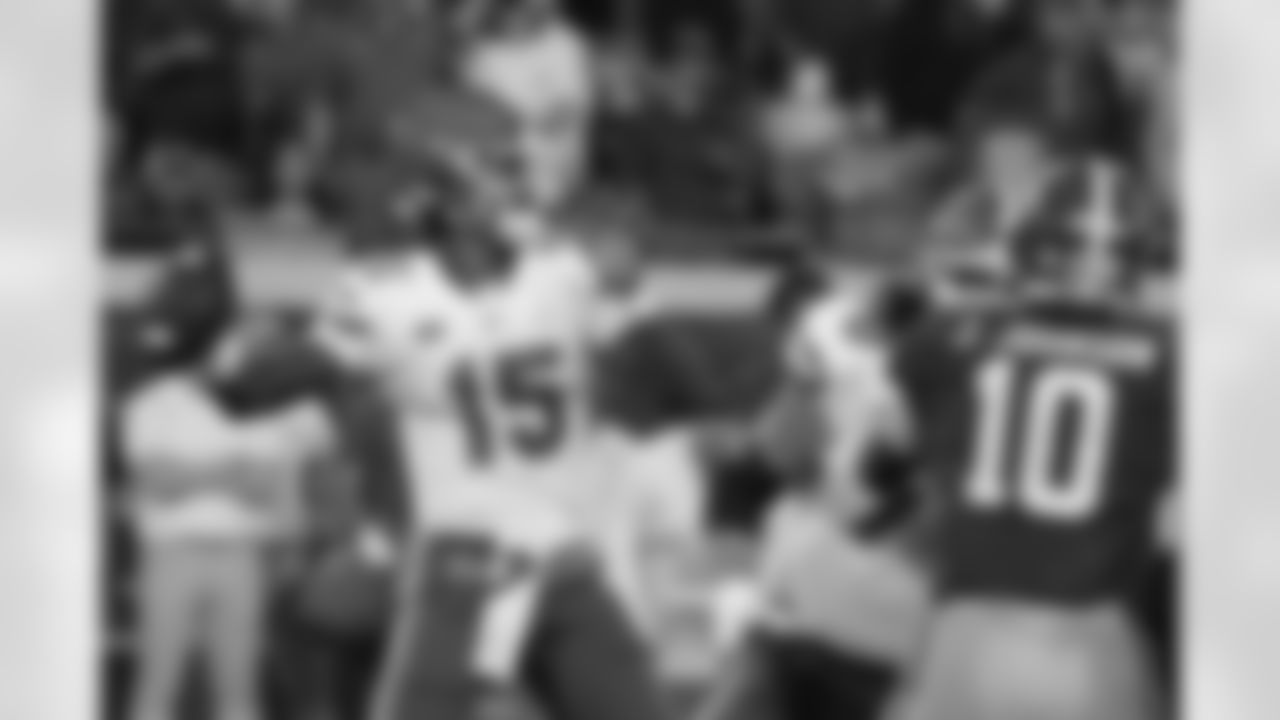
Florida quarterback Anthony Richardson (15) throws a pass as he is pressured by Georgia linebacker Jamon Dumas-Johnson (10) during the second half of an NCAA college football game Saturday, Oct. 29, 2022, in Jacksonville, Fla. (AP Photo/John Raoux)
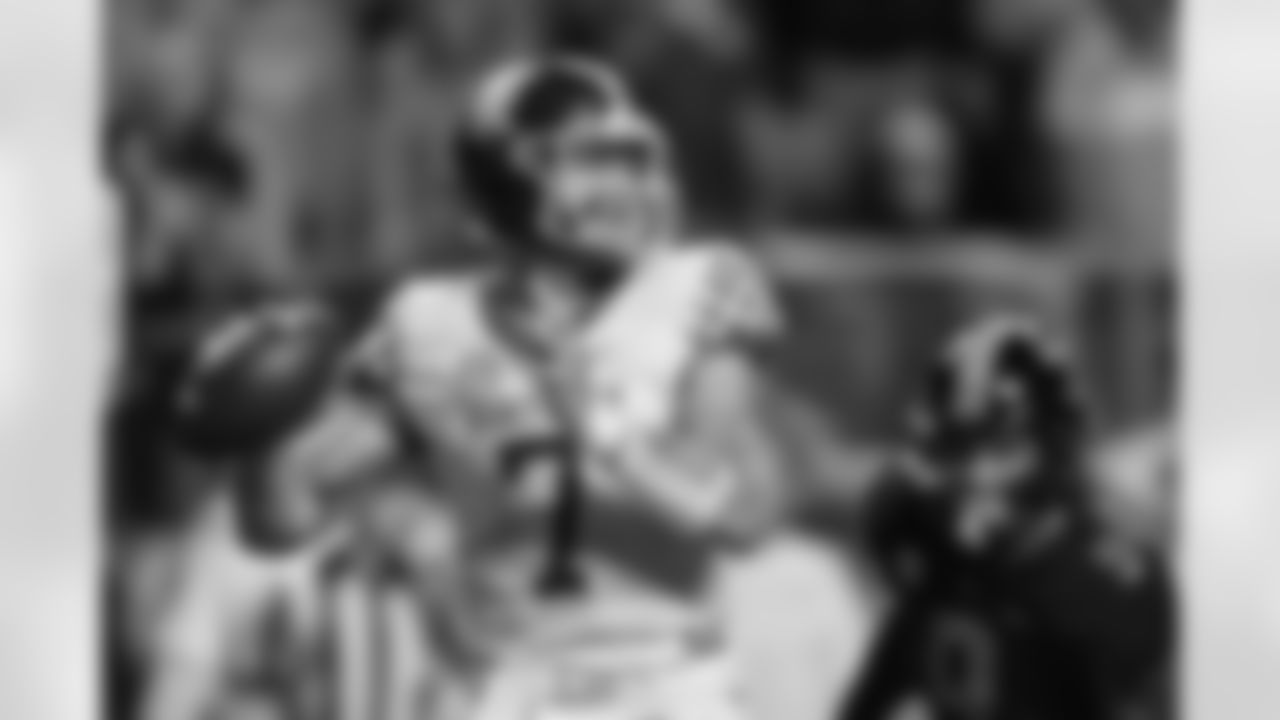
Kentucky quarterback Will Levis (7) throws to a receiver during the first half of an NCAA college football game against Tennessee Saturday, Oct. 29, 2022, in Knoxville, Tenn. (AP Photo/Wade Payne)

Kentucky quarterback Will Levis warms up before the start of an NCAA college football game against Missouri Saturday, Nov. 5, 2022, in Columbia, Mo. (AP Photo/L.G. Patterson)
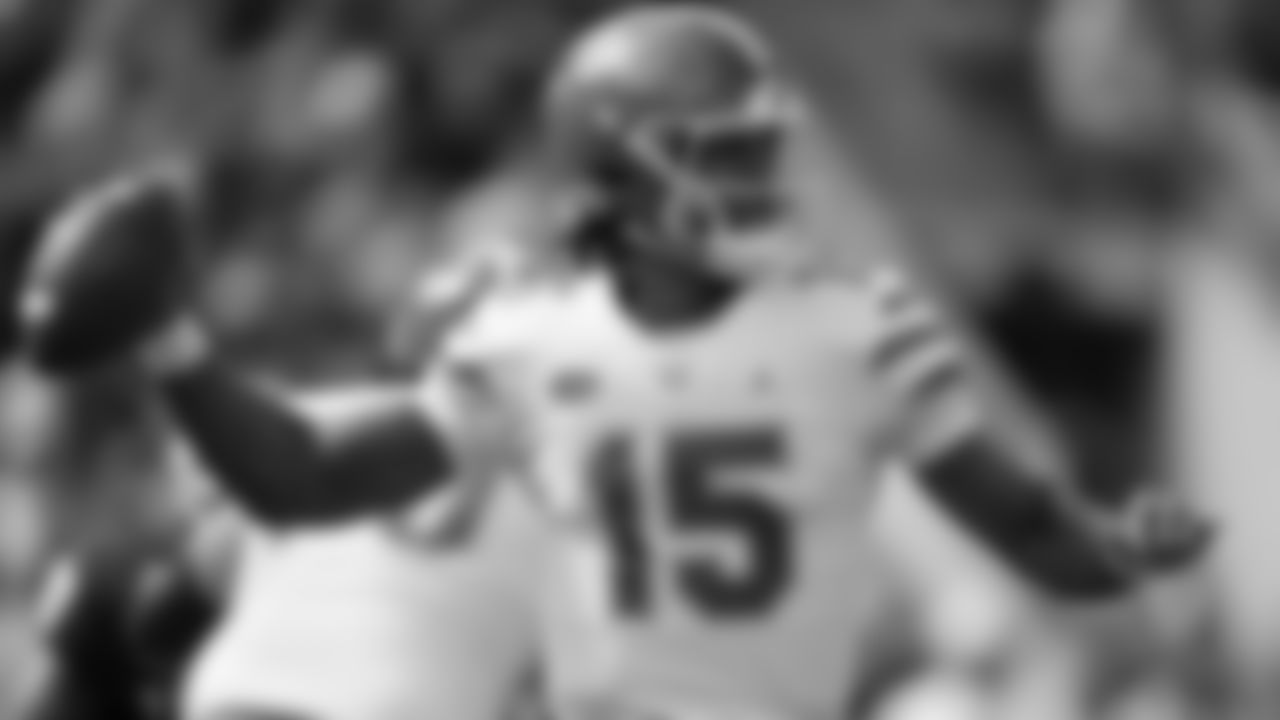
Florida quarterback Anthony Richardson (15) pass down field against Texas A&M during the first half of an NCAA college football game Saturday, Nov. 5, 2022, in College Station, Texas. (AP Photo/Sam Craft)

Alabama quarterback Bryce Young (9) during the first half of an NCAA college football game against LSU in Baton Rouge, La., Saturday, Nov. 5, 2022. (AP Photo/Tyler Kaufman)

Kentucky quarterback Will Levis throws a pass during the second half of an NCAA college football game against Vanderbilt in Lexington, Ky., Saturday, Nov. 12, 2022. (AP Photo/Michael Clubb)
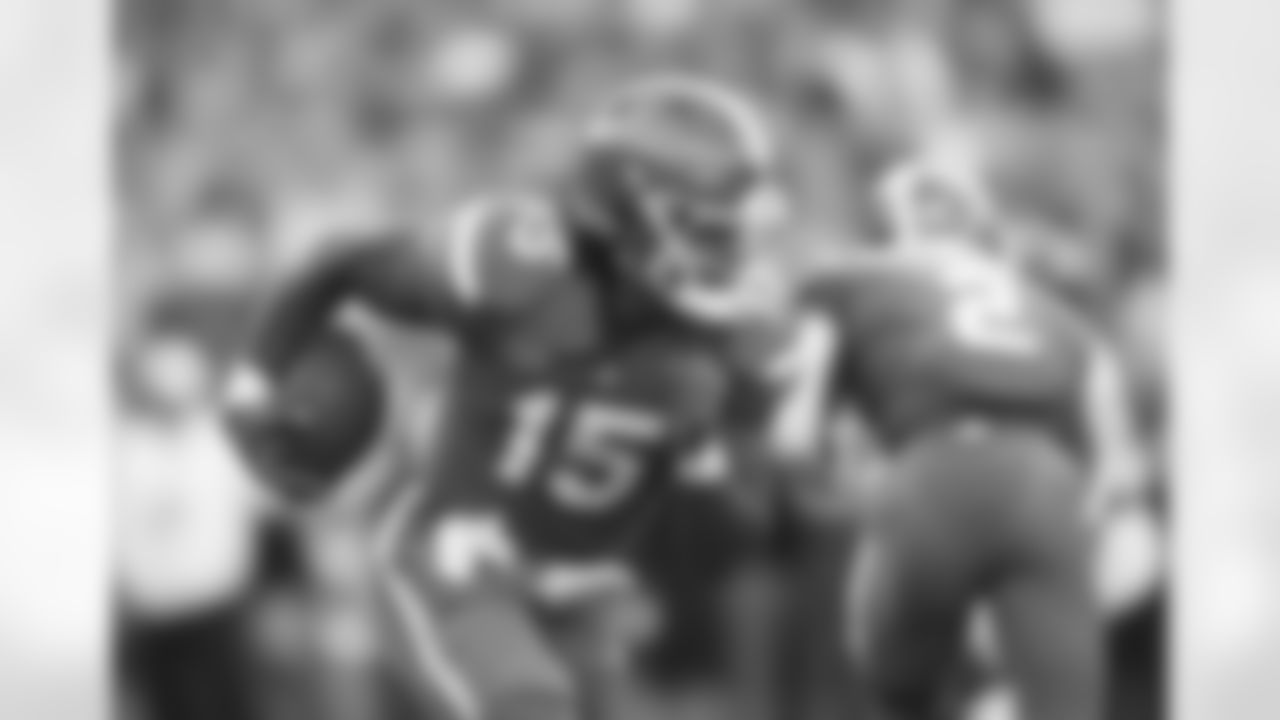
Florida quarterback Anthony Richardson (15) runs upfield during the first half of an NCAA college football game against South Carolina, Saturday, Nov. 12, 2022, in Gainesville, Fla. (AP Photo/Matt Stamey)

Florida quarterback Anthony Richardson (15) gestures to a teammate against South Carolina during the first half of an NCAA college football game Saturday, Nov. 12, 2022, in Gainesville, Fla. (AP Photo/Matt Stamey)

Florida quarterback Anthony Richardson plays against Vanderbilt in the first half of an NCAA college football game Saturday, Nov. 19, 2022, in Nashville, Tenn. (AP Photo/Mark Humphrey)
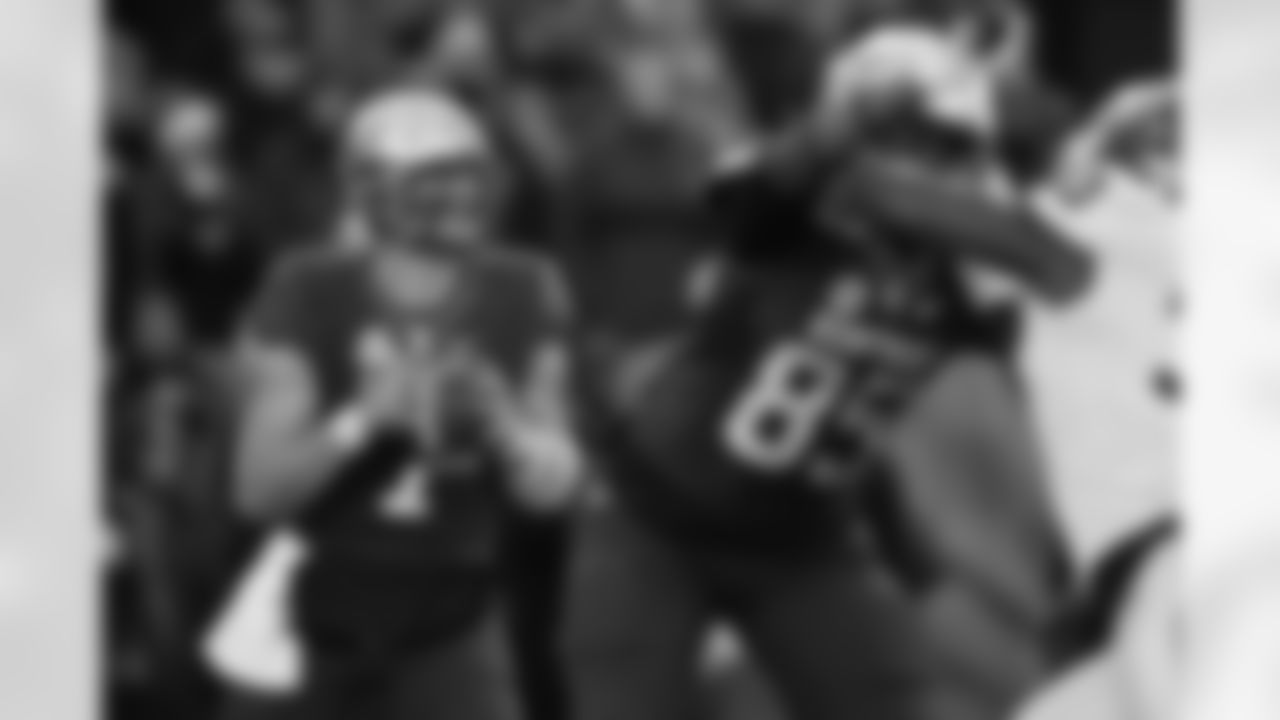
Kentucky quarterback Will Levis (7) looks for an open receiver during an NCAA college football game in Lexington, Ky., Saturday, Nov. 19, 2022. (AP Photo/Michael Clubb)
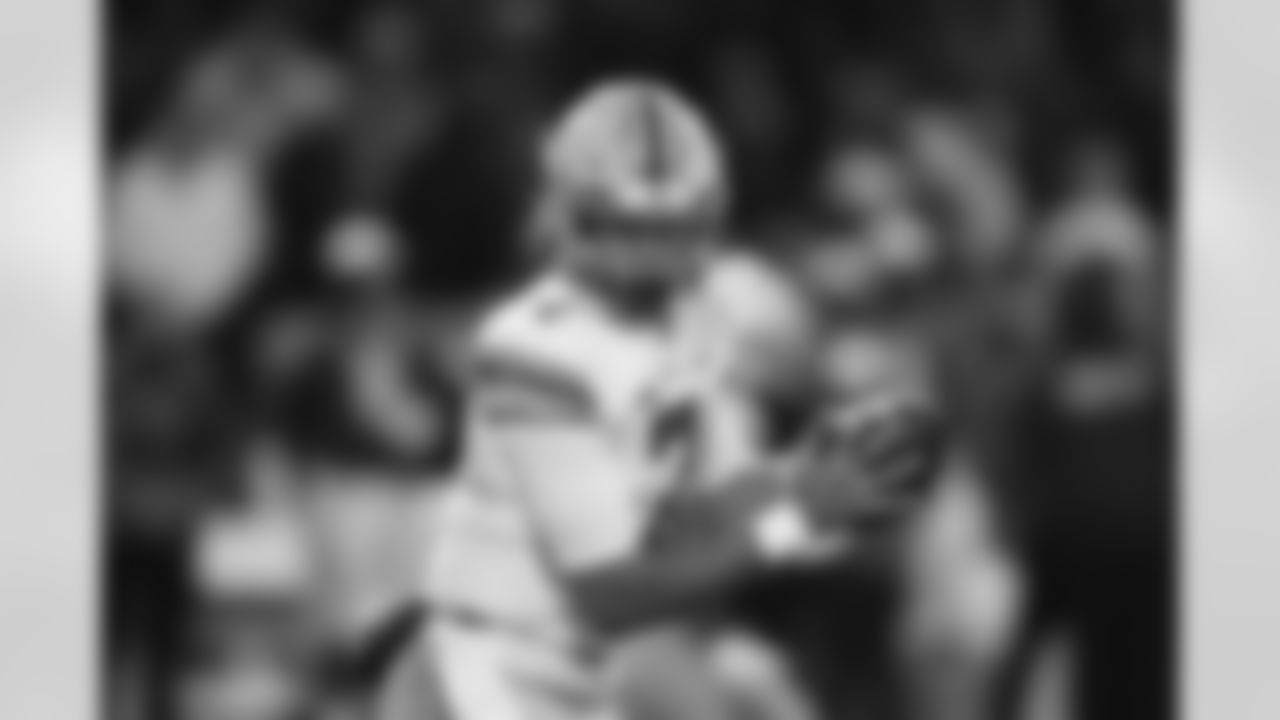
Ohio State quarterback C.J. Stroud (7) in action during the first half of an NCAA college football game against Maryland, Saturday, Nov. 19, 2022, in College Park, Md. (AP Photo/Nick Wass)
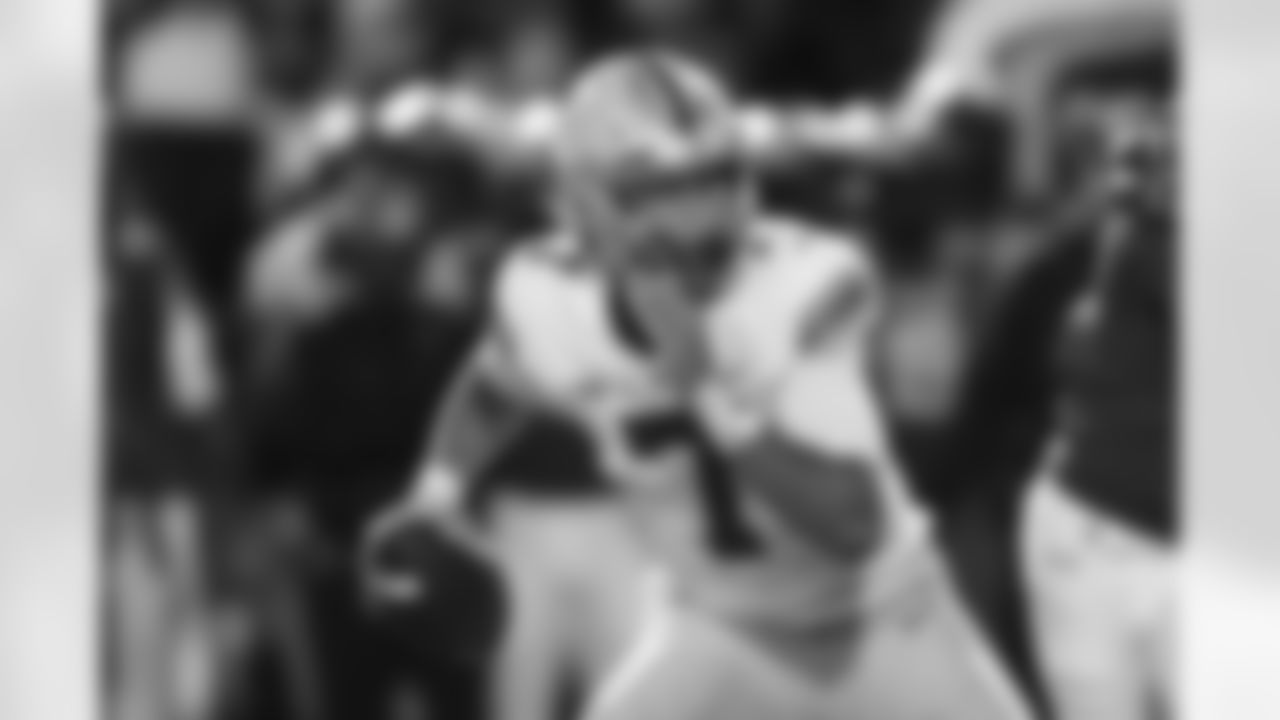
Ohio State quarterback C.J. Stroud (7) in action during the second half of an NCAA college football game against Maryland, Saturday, Nov. 19, 2022, in College Park, Md. Ohio State won 43-30. (AP Photo/Nick Wass)

Ohio State quarterback C.J. Stroud (7) in action during the second half of an NCAA college football game against Maryland, Saturday, Nov. 19, 2022, in College Park, Md. Ohio State won 43-30. (AP Photo/Nick Wass)

Ohio State quarterback C.J. Stroud (7) in action during the first half of an NCAA college football game against Maryland, Saturday, Nov. 19, 2022, in College Park, Md. (AP Photo/Nick Wass)

Ohio State quarterback C.J. Stroud looks for an open pass against Michigan during the first half of an NCAA college football game on Saturday, Nov. 26, 2022, in Columbus, Ohio. (AP Photo/Jay LaPrete)

Alabama quarterback Bryce Young (9) scores a touchdown against Auburn during the first half of an NCAA college football game, Saturday, Nov. 26, 2022, in Tuscaloosa, Ala. (AP Photo/Vasha Hunt)

FILE - Alabama quarterback Bryce Young (9) looks to pass during the second half of an NCAA college football game against Mississippi in Oxford, Miss., on Nov. 12, 2022. In an age of "opt-outs" in college football, the best NFL prospects for Alabama and Kansas State are opting in at the Sugar Bowl, on Saturday, Dec. 30, 2022, including Young. (AP Photo/Thomas Graning, File)

Alabama quarterback Bryce Young (9) looks to throw a pass against Kansas State during the second half of the Sugar Bowl NCAA college football game Saturday, Dec. 31, 2022, in New Orleans. (AP Photo/Butch Dill)

Alabama quarterback Bryce Young (9) celebrates after throwing a touchdown pass during the second half of the Sugar Bowl NCAA college football game against Kansas State, Saturday, Dec. 31, 2022, in New Orleans. (AP Photo/Butch Dill)

Ohio State quarterback C.J. Stroud (7) passes against Georgia during the first half of the Peach Bowl NCAA college football semifinal playoff game, Saturday, Dec. 31, 2022, in Atlanta. (AP Photo/Danny Karnik)

Alabama quarterback Bryce Young (9) throws a pass against Kansas State during the second half of the Sugar Bowl NCAA college football game Saturday, Dec. 31, 2022, in New Orleans. (AP Photo/Butch Dill)

Alabama quarterback Bryce Young speaks during a news conference at the NFL football scouting combine in Indianapolis, Friday, March 3, 2023. (AP Photo/Darron Cummings)

Kentucky quarterback Will Levis warms up before he runs a drill at the NFL football scouting combine in Indianapolis, Saturday, March 4, 2023. (AP Photo/Michael Conroy)

Kentucky quarterback Will Levis runs a drill at the NFL football scouting combine in Indianapolis, Saturday, March 4, 2023. (AP Photo/Darron Cummings)

Kentucky quarterback Will Levis runs a drill at the NFL football scouting combine in Indianapolis, Saturday, March 4, 2023. (AP Photo/Darron Cummings)

Kentucky quarterback Will Levis runs a drill at the NFL football scouting combine in Indianapolis, Saturday, March 4, 2023. (AP Photo/Darron Cummings)

Kentucky quarterback Will Levis runs a drill at the NFL football scouting combine in Indianapolis, Saturday, March 4, 2023. (AP Photo/Darron Cummings)

Florida quarterback Anthony Richardson runs a drill at the NFL football scouting combine in Indianapolis, Saturday, March 4, 2023. (AP Photo/Michael Conroy)

Florida quarterback Anthony Richardson runs a drill at the NFL football scouting combine in Indianapolis, Saturday, March 4, 2023. (AP Photo/Darron Cummings)

Florida quarterback Anthony Richardson runs a drill at the NFL football scouting combine in Indianapolis, Saturday, March 4, 2023. (AP Photo/Michael Conroy)

Ohio State quarterback CJ Stroud runs a drill at the NFL football scouting combine in Indianapolis, Saturday, March 4, 2023. (AP Photo/Michael Conroy)















